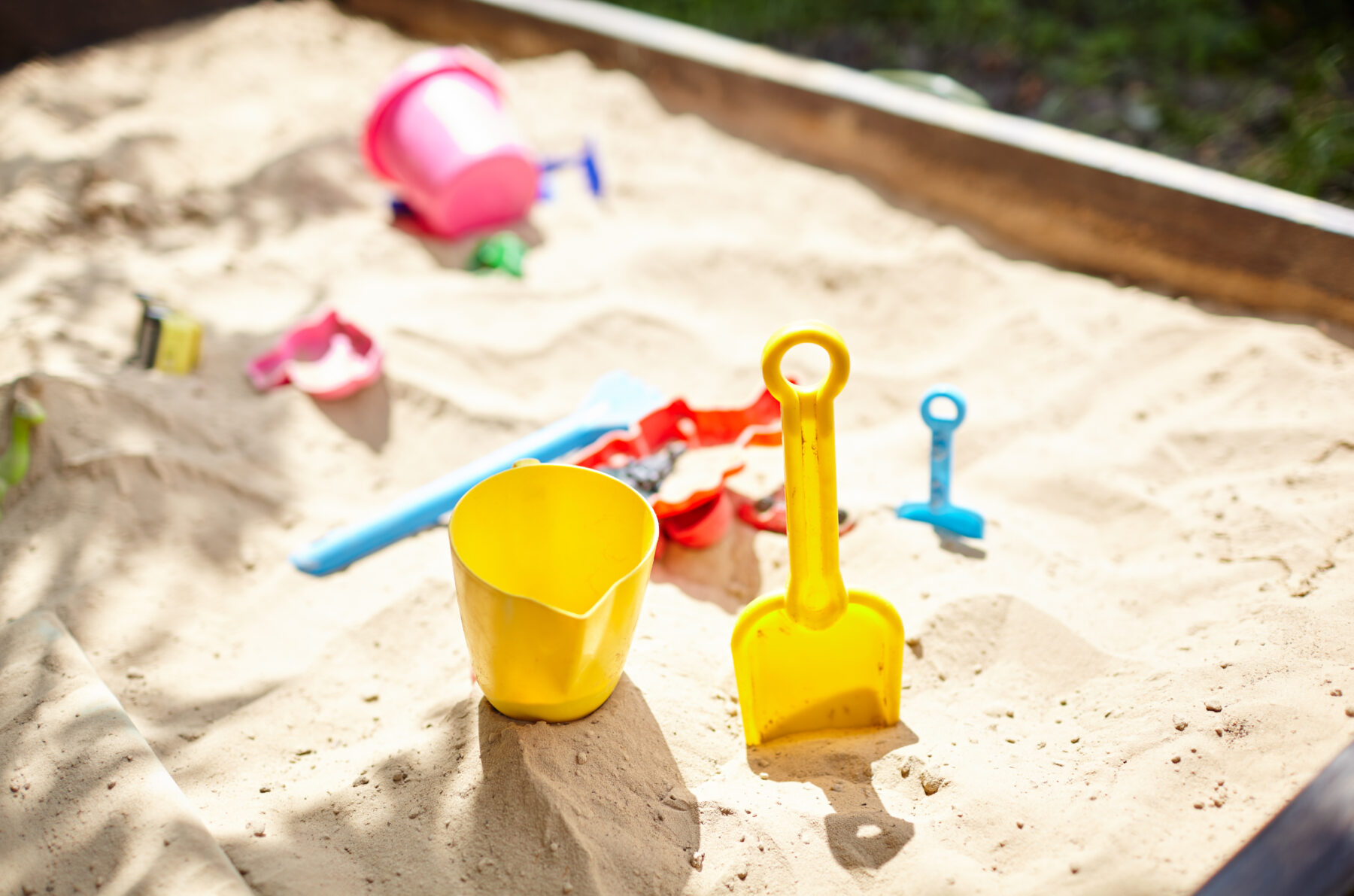Guide: Creating a Sandbox Play Area
April 1, 2024

There’s a lot of fun to be had when sand is involved. A sandbox play area is a flexible feature that fits into small backyards or larger parks, providing endless opportunities for play. They provide sensory engagement, creative freedom, and motor skill benefits make them timeless. The sand’s unique feel and temperature engage multiple senses, making playtime even more stimulating. Practical creativity comes into play as children create shapes and structures in the sand, letting their imaginations roam free. At the same time, these hands-on activities strengthen hand and arm muscles, aiding in the growth of motor skills. This makes a sandbox play area a great addition to any space designed for children, encouraging learning, creativity, and fun.
Planning the Build
Choosing the location for a sandbox play area is the right place to start. Consider a safe and visible corner in the yard, where it’s easy to keep an eye on play activities. A spot with partial shade will protect against the sun, ensuring that playtime remains comfortable throughout the day.
For a sandbox, consider the available space and the number of kids that will be using it. Ideally, 500 square inches per child is adequate. For instance, a 6 ft x 6 ft sandbox can comfortably accommodate two children.
There’s a lot of material options for a good sandbox frame. Selecting something strong, kid-friendly, and weather-resistant is the typical aim here. Choices span from wood to plastic, or even upcycled materials. Consider lining the sandbox base with landscape fabric or plastic sheets, to ward off weeds and insects.
Filling the sandbox requires sand that is safe for play. Avoid types with potentially harmful particles or chemicals. Choose clean, safe play sand, intended for kids’ sandboxes. Sands typically come in bags – the amount needed hinges on the sandbox’s dimensions.
Beyond the sandbox and sand, additional tools and accessories may be necessary. Consider adding a sturdy tarp or cover for the sandbox to keep a clean, dry sand surface. A rake could be useful in keeping the sand even. Don’t forget to add a variety of toys for digging and construction activities to encourage creativity.
Building the Sandbox
Begin by preparing the ground. Clear and level the space, removing any underground rocks, roots, or debris. Ensure the area is flat to avoid instability. Consider using a weed deterrent to stop any unnecessary growth within the sandbox. This helps maintain a neat, enjoyable space for children to play.
When it comes to constructing the frame, prioritizing a sturdy, safe build should be the focus. Look for high-quality wood that can stand up to outdoor conditions and rough play. Make note of the frame’s height as well—it should be tall enough to hold the sand, but not so high as to create a safety concern. Secure the frame pieces into a square or rectangular shape with screws that are resistant to rust.
Next, choose a child-safe variety of sand. This type of sand is often specifically treated to reduce dustiness and ensure sanitation. Fill the sandbox with this sand, stopping a few inches short of the top to keep the sand from overflowing during activities.
Take care of any remaining safety aspects. Make sure edges and corners are smoothed to avoid injuries. Additionally, think about installing corner covers for extra safety. It may also make sense to include a base for the sandbox, creating an extra layer of safety between the sand and the soil underneath.
Accessories and Maintenance
Maintaining the sandbox doesn’t end with its creation—it involves ongoing care. An important part of this care is choosing the right cover. A good cover is a must. It serves to protect the sand from things like rain or fallen leaves and helps keep local animals from mistaking the sandbox for a place to do their business.
What brings the charm to a sandbox is its potential for fun, but a few specific toys can enhance this enjoyment. Think about including items like buckets, spades, and shapes, or even building toys for more advanced play. Remember, these extras should be simple to clean and safe for kids to use.
Adopting a consistent care routine can keep the sandbox fun and safe. This should include regular sand replacement for freshness, frequent checks for sharp objects to avoid injury, and thorough cleaning to make sure it lasts. Although it sounds challenging, setting up good care habits early helps maintain a clean, enjoyable, and secure sandbox for a long time.
Creating a sandbox play area provides kids with a special chance for imaginative play and skill development. This area isn’t merely a box with sand, but a spot for all kinds of creative adventures. Participation in sandbox play aids in a deeper connection and provides an opportunity for guided learning. Keep in mind, regular upkeep of a sandbox takes some commitment, but the joy it brings to children makes it all worth the effort.

